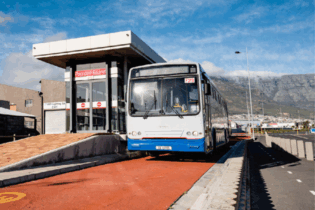The sustainability of corridor management institutions (CMIs) in East and Southern Africa has always been difficult to achieve. Some years ago, agreement was reached to set up a forum where these institutions and regional associations could share experiences and develop best practices for corridors in the region. A workshop was subsequently arranged by the Walvis Bay Corridor Group (WBCG) from 2 to 4 July 2012 to discuss various sustainability models and determine the best way forward.
Funded by the United Nations Commission for Africa and hosted by the Namibian Ministry of Works and Transport, the workshop drew more than 30 delegates from the region. The workshop occurred in a context where despite Africa’s positive export growth rate, its share of world trade remained at a gloomy 3%. Although high transaction costs and unfair world trade policies obviously have a negative impact, the reason is more often than not as a result of logistical constraints. In terms of the functions of the CMIs and the ports, Fesarta’s position is that the CMIs’ sole purpose is to improve efficiencies along the corridors. As consumers are ultimately the beneficiaries of these improvements, the funding of the CMIs should be through levies on the goods, paid at the ports. Transport companies already pay road-use charges along the corridors and, as such, should not be required to pay additional levies to fund the CMIs. Fesarta also maintains that the size of each CMI should reflect traffic flow along a specific corridor. A corridor with low traffic volumes should not have a large CMI, thus keeping the user-pay levy lower so as not to impact on the cost of goods to the consumer.It was also suggested that the user-pay fee currently levied on goods being handled by Walvis Bay be used to support the CMIs on the trans-Kalahari, trans-Caprivi and trans-Cunene corridors and not utilised to fund the offices of the WBCG.
Furthermore, we believe that the ports are responsible for marketing their competiveness along the corridors and that they should fund these activities. Finally, a pan-African corridor management institution, an idea originally suggested in 2005 and subsequently investigated by a consultant of the World Bank Sub-Saharan Africa Transport Policy Programme was discussed at the workshop. The Port Management Association of Eastern and Southern Africa recently decided to revive this concept. However, we are of the opinion that there is not much support for another such institution and agreement was reached that CMIs and regional organisations should continue to network for the development of best practices. Moving towards one-stop border posts The cost of border crossing delays continues to constitute the biggest expense to logistics on the continent. The creation of one-stop border posts will go a long way in alleviating this situation. At present, both the trans-Kalahari/Mamuno and Lebombo/Ressano Garcia are on track to becoming one-stop border posts. With regards to Lebombo/Ressano Garcia border post, the Maputo Corridor Logistics Initiative has been calling for the implementation of a 24-hour one-stop facility since its inception. Mozambique has already ratified the bilateral agreement and it is currently in the process being ratified by the South African parliament.






